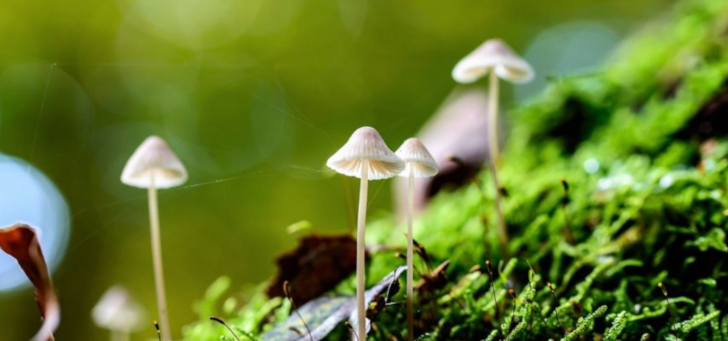Make the most of mycorrhizal symbiosis when planning landscapes!
The close relationship between mycorrhizal fungi and plants is a win-win situation! Symbiosis was one of the key concepts of the “Dahlia Pollen Connect” innovation presented by Nova-Flore at Paysalia 2017. To find out more, we talked with Vincent Roullois, R&D manager of Nova-Flora which specializes in the ecological development of green spaces and landscapes and which has been researching mycorrhizal symbiosis for over 4 years.

The close relationship between mycorrhizal fungi and plants is a win-win situation! Symbiosis was one of the key concepts of the “Dahlia Pollen Connect” innovation presented by Nova-Flore at Paysalia 2017. To find out more, we talked with Vincent Roullois, R&D manager of Nova-Flora which specializes in the ecological development of green spaces and landscapes and which has been researching mycorrhizal symbiosis for over 4 years.

Paysalia: Mr. Roullois, your innovations use mycorrhizal symbiosis. What is mycorrhizal symbiosis?
Mycorrhizal symbiosis, or mycorhiza, is an association between two partners - the roots of a plant and a mycorrhizal fungus which lives in the ground. This is a mutually beneficial association for both partners - the plant supplies the fungus with the sugars it needs to grow through photosynthesis and the mushroom’s mycelium network enables the plant to explore the ground more fully and absorb more minerals and water.
What are the benefits of this symbiosis?
Scientific publications state that mycorrhiza makes it possible to boost a plant’s root system by a factor of 80. Some studies even state up to 1,000! Whatever the figure, it is obviously beneficial to the plant! This improvement improves plants resistance to drought, external stress and pathogens. On flowering grasslands, our R&D center has shown that mycorrhizal symbiosis increases ground cover by 35%. This extra cover reduces the growth of weeds. And there are more flowers which increases the presence of pollinating insects. By way of an example, we noted 20% more flowers on rose bushes and 30% on dahlias. To some extent symbiosis compensates for physical and chemical deficiencies in some soils and reduces the need for the application of chemicals and ensures less maintenance.
On what plants can mycorrhiza be used?
The great advantage of mycorrhizal symbiosis is that it can be used with 95% of all plants! The remaining 5% include families of plants like Brassicaceae and Chenopodiaceae. For our research, we started to work on grassland mixtures and then on rose bushes and dahlias which have the advantage of being summertime plants which flower when there are fewer resources for bees. Today, we propose a vast choice of mycorrhizal products adapted to every landscape planning project.
What do you need to know to practice mycorrhizal symbiosis when it comes to landscape planning?
There are two main types of mycorrhizal symbiosis: endomycorrhizal (the mushroom joins the root at the cellular level) and ectomycorrhizal (the mushroom only makes contact on the surface of the root). Certain plants are only endo- or ecto-mycorrhizal.
So the first step is to choose the right mycorrhizal fungus. Then you have to use the right dose of mycorrhizal fungus. Not all the plants in your landscape have the same needs. In our R&D center we run tests to optimize doses because over-strong concentrations can reduce the benefits expected. During mycorrhizal symbiosis, excess fungi will capture everything the plant gives, impairing the plant’s own growth. And then there are several ways to incorporate the mycorrhizal fungus, depending on the species of plant – as a powder, as pellets planted in the ground, as a solution to spray on the roots or via a dressing applied to the roots. A slowdown in growth after applying the mycorrhiza is completely normal: if the mycorrhizal fungus is well proportioned, this will correct itself very quickly.
You used this technology to develop your Dahlia Pollen Connect innovation which won an award at Paysalia 2017. Did the award do anything for your company?
We met many journalists and have had a lot of positive feedback concerning our innovation. We launched our new range of spring bulbs for professionals’ market at the show. Public Authorities are increasingly interested in attracting pollinating insects through landscape planning and our red label certified bulbs combine looks and attractiveness to insects. This innovation continues what we have been doing for many years - combining functionality with the conservation of biodiversity. It is still a little early to get market feedback – but we have already met our commercial objectives!
Paysalia Innovations Trophies 2017: a look back at six award-winners!
For more about the innovation award won by Nova-Flora, see our video interview made at Paysalia 2017!
Our thanks to M. Roullois from Nova-Flore for sharing his expertise.
Photo credit: Daniel Brachlow / Pixabay

